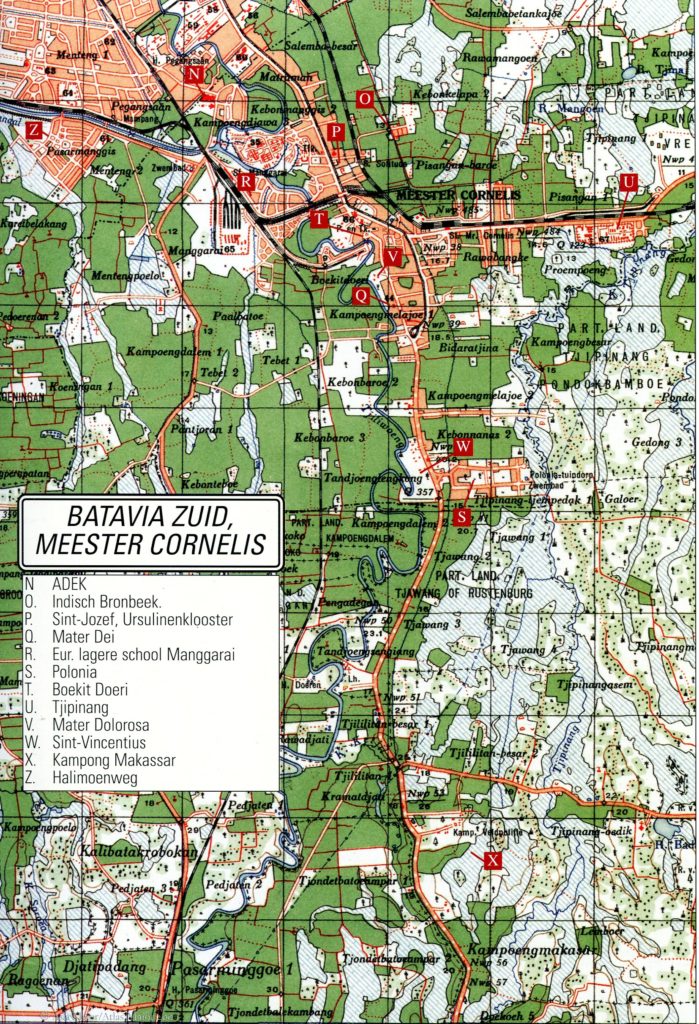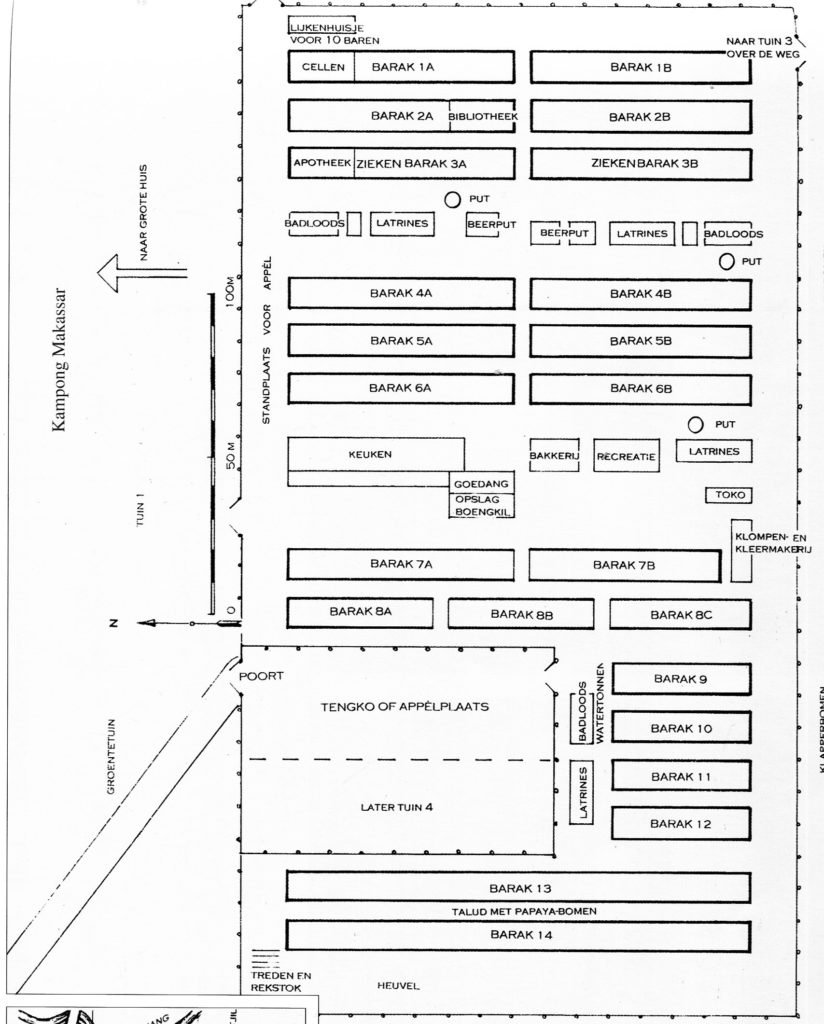Kampong Makassar
Kampong Makassar
Kampong Makassar Location:

This POW and civilian internment camp was located about 6 km south of Batavia in a coconut plantation on the eastern side of the main road from Batavia ( Jakarta) to Buitenzorg (today’s Bogor) . The camp was named after a large eighteenth century house (1775), originally serving as plantation residence and later converted to Police barrack for married staff. It stood at the end of the 300 meter access road.
This house, also called Tjilitan besar, served as residence for the Japanese camp commandant during the occupation period.
The POW camp lay 200 meters further east in of the house on open terrain, marked by an “X”.
Kampong Makassar History

Phase 1: POW camp
The accompanying Kampong Makassar camp diagram is oriented correctly. The North arrow on the diagram is faulty and should be rotated clockwise 90 degrees.
Kampong Makassar was started in 1942 by the Japanese army as a POW camp for Australian and other allied military captives, as a transit camp for Allied Prisoners of War, en route from Eastern Java to various forced labour destinations.
On 15 September 1944, 700 POWs left from Kampong Makassar to be transported by the S.S. Junyo Maru to Padang, Sumatra for work on the Pakanbaru Railway. The Junyo Maru was torpedoed by an allied submarine unaware of its human cargo . Most of that human cargo consisted of Indonesian “volunteers” who had been dragooned into service of the Japanese Imperial army, and most of them perished. Some of the Allied POWs survived and were picked up by a Japanese destroyer to continued on their journey to the Pakanbaroe (or Pakanbaru) railway project. One of our travelling companions from South Africa, an excellent swimmer, perished in this tragedy The book Tjideng Reunion describes these events in more detail (Chapter II and VII).
Phase 2: Civilian Internment work camp
In January 1945 Kampong Makassar became a women’s and children’s camp, set up to work the land and provide food for other camps.
On 3 january 1945, 48 women and children arrived from Grogol camp, followed a week later by 50 women and children from Struiswijk camp (Batavia) , and on 12 January the arrival of 106 women and children from Tjideng camp (Batavia). On 25 January another 485 women (without children) arrived from Tjideng along with 245 women and children from Kramat camp (Batavia). In February 246 women and children arrived from Grogol camp and in March, 1945, 70 women and children from Kota Paris camp (Bogor), 654 women and children from Kedoengbadak camp (Bogor), followed next day (17 March) by 50 women from Tjideng (as punishment).
In May, 1945 , 161 women and children arrived from ADEK camp (Batavia) and finally , on 15 May, 1945 750 women and children arrived from Tjihapit camp (Bandoeng). After eviction of about twenty men, boys and women, the final population was around 3600.
No name lists records survived the war.
The only occupants that ever flourished in this camp were the bed bugs.
Kampong Makassar camp commandant:
Captain Tanako Kentaro
Kampong Makassar Objective
Work camp for vegetable production for all of the internment camps in and around Batavia, from the nearby plantation area.
Information source: Kamp Atlas, published by Asia Maior (2000 and 2002)
Kampong Makassar Literature
Ernest Hillen: The Way of a Boy (Penguin)
Ko Luijckx. Het Verbluffende Kamp
Kampong Makassar Images
Photographs made by H. Ripassa shortly after the war ( NIOD collection)
Drawings and paintings made by inmates (Museon, the Hague collection)>
Leave a Reply